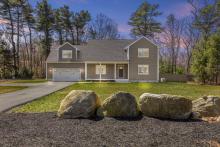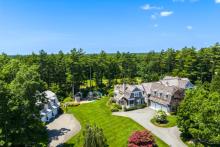Weweantic River conservation project on track
The Buzzards Bay Coalition expects to finalize the conservation of 215 acres in Wareham along the Weweantic River by early summer 2025 following a vote of financial support at the Fall Town Meeting.
The plan, dubbed the Weweantic River Corridor Open Space project, will permanently protect 730 acres of forest, cranberry bogs and wetlands— 215 of which are in Wareham off Charlotte Furnace Road, adjacent to the youth soccer and girl’s softball field complex. The remaining 515 acres lie north, in Carver.
At the October Town Meeting, Wareham voted to provide $375,000 of the $5.8 million purchase price of the property. The town will also hold the conservation restriction for the property which prevents any future development on the land in perpetuity.
Buzzards Bay Coalition Vice President of Watershed Protection, Brendan Annett expects Carver to offer an identical amount for the purchase and approve their own conservation restriction for their portion of the property at the next Carver Town Meeting.
“It will be a mirror image on both sides,” Annett said.
Buzzards Bay Coalition will fund the rest of the purchase with a combination of state and federal grants and private donations.
Both Carver and Wareham will receive a $75,000 reimbursement from a federal grant, bringing down the total spent by taxpayers to $300,000.
Once the purchase is finalized the coalition can begin work on wetland restoration and the addition of recreational trails.
The land in Wareham is currently owned by the Slocum-Gibbs cranberry company and is mostly wooded but a portion is covered in cranberry bogs.
Annett said a priority of the project will be converting the bogs closest to the river back into natural wetland.
Annett said “it makes sense” for the bogs further from the river to continue cranberry production.
For the rest, Annett said the coalition will be “restoring the natural hydrology,” by removing pipes and water control structures, filling in ditches and scraping out sand.
“It creates a more natural topography as opposed to the sort of Belgian waffle you may be used to seeing,” Annett said.
Wetland restoration will follow an extended funding-dependent timeline but Annett said the installation of signage and recreational trails could be finished by the end of 2025.
Farm roads already crisscross much of the property and the trails project could potentially connect the existing ball field parking lot to the conservation area.
Annett said the project is very similar to the cranberry bog restoration project in Mattapoisset which reopened after extensive restoration in November 2024.
“It’s expensive and it’s a big project so it's challenging but the benefits are extensive,” Annett said.















